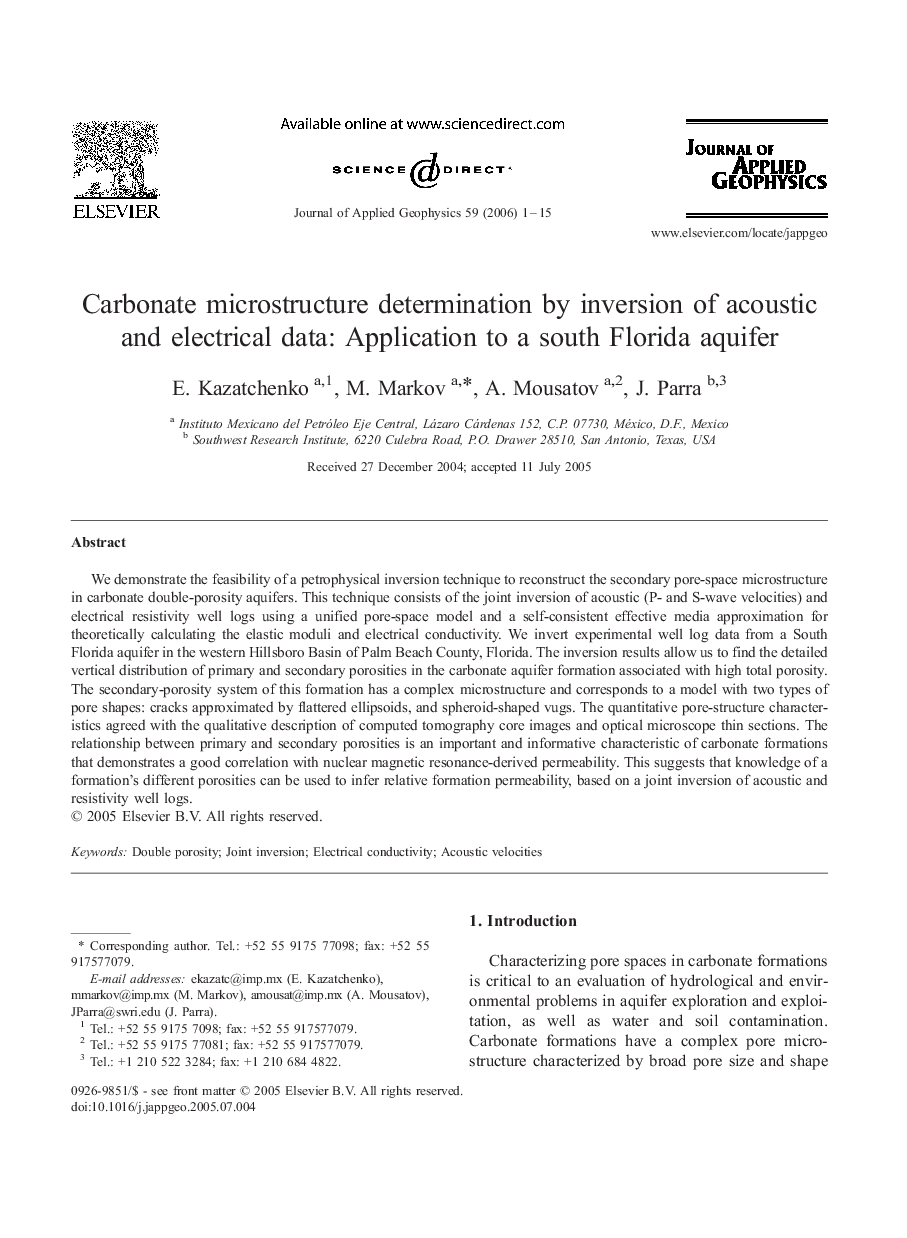| Article ID | Journal | Published Year | Pages | File Type |
|---|---|---|---|---|
| 4741277 | Journal of Applied Geophysics | 2006 | 15 Pages |
Abstract
We demonstrate the feasibility of a petrophysical inversion technique to reconstruct the secondary pore-space microstructure in carbonate double-porosity aquifers. This technique consists of the joint inversion of acoustic (P- and S-wave velocities) and electrical resistivity well logs using a unified pore-space model and a self-consistent effective media approximation for theoretically calculating the elastic moduli and electrical conductivity. We invert experimental well log data from a South Florida aquifer in the western Hillsboro Basin of Palm Beach County, Florida. The inversion results allow us to find the detailed vertical distribution of primary and secondary porosities in the carbonate aquifer formation associated with high total porosity. The secondary-porosity system of this formation has a complex microstructure and corresponds to a model with two types of pore shapes: cracks approximated by flattered ellipsoids, and spheroid-shaped vugs. The quantitative pore-structure characteristics agreed with the qualitative description of computed tomography core images and optical microscope thin sections. The relationship between primary and secondary porosities is an important and informative characteristic of carbonate formations that demonstrates a good correlation with nuclear magnetic resonance-derived permeability. This suggests that knowledge of a formation's different porosities can be used to infer relative formation permeability, based on a joint inversion of acoustic and resistivity well logs.
Related Topics
Physical Sciences and Engineering
Earth and Planetary Sciences
Geophysics
Authors
E. Kazatchenko, M. Markov, A. Mousatov, J. Parra,
